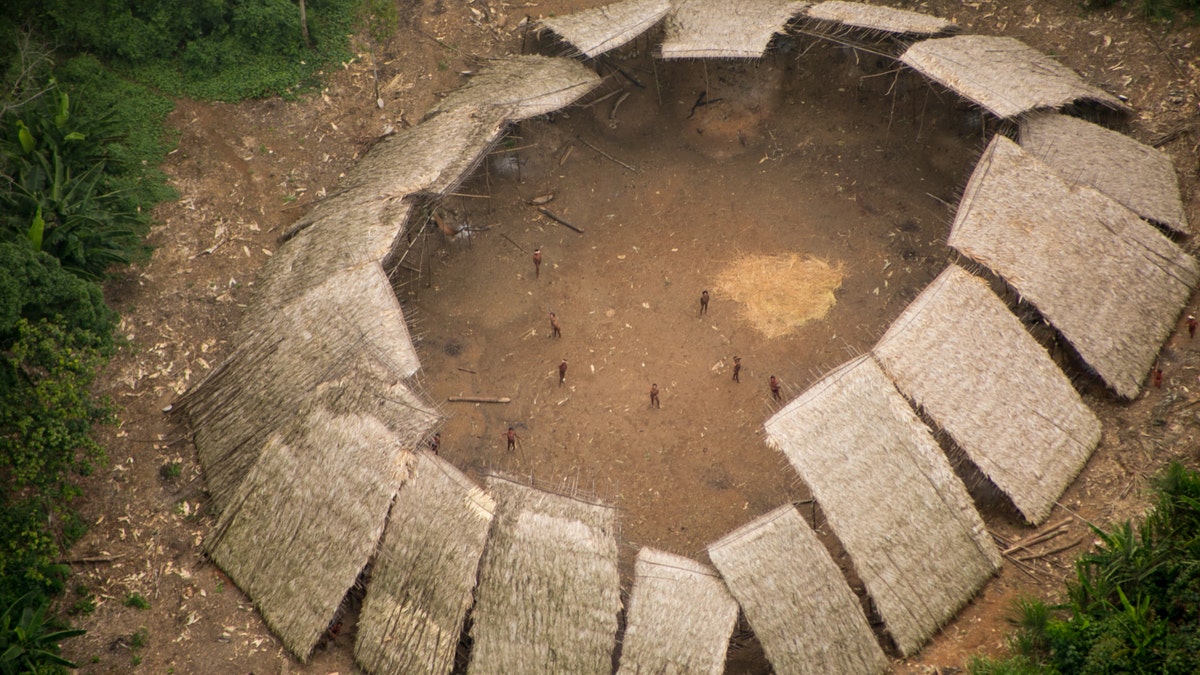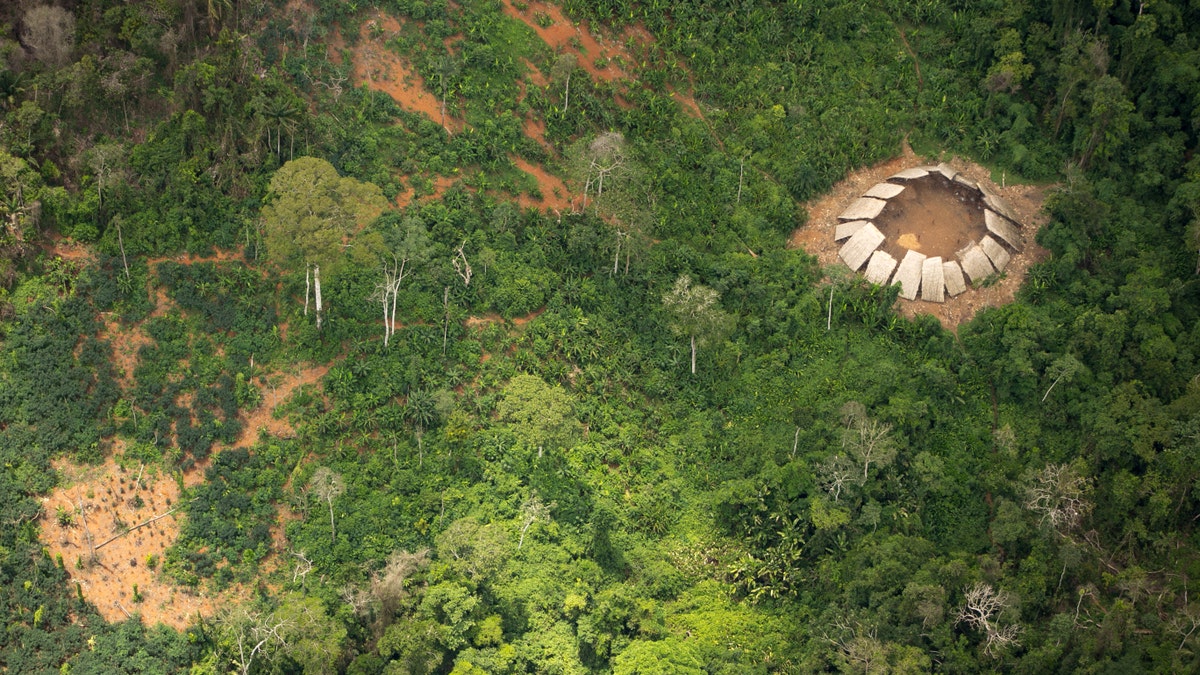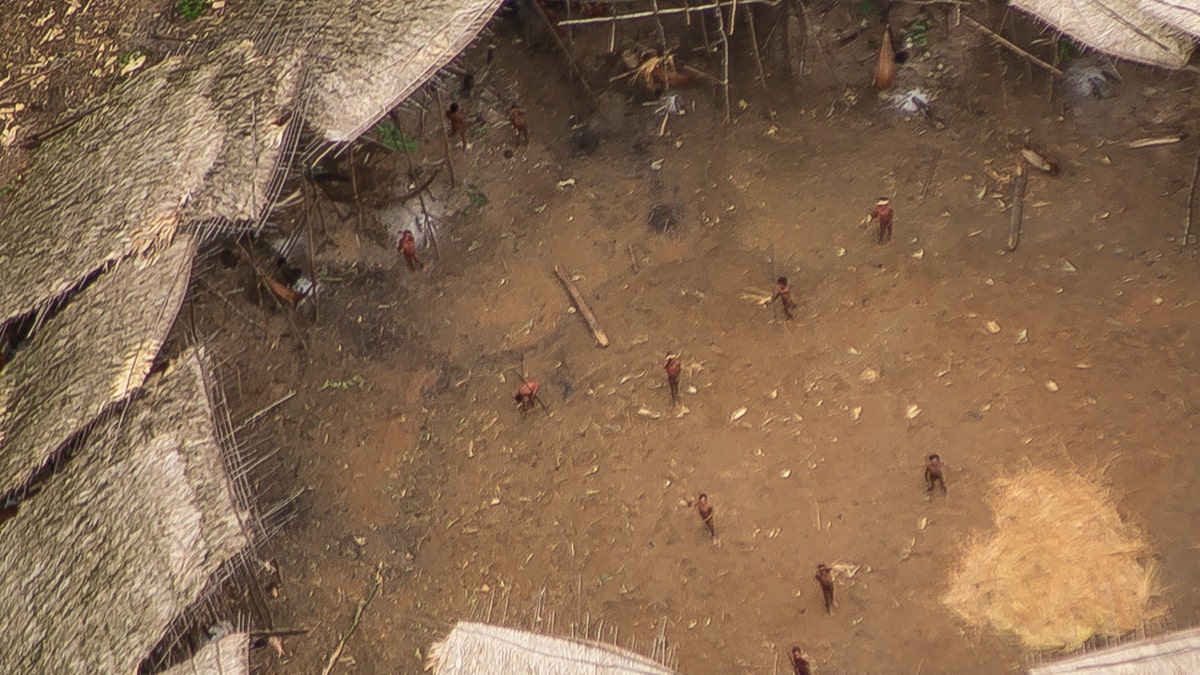
Uncontacted Yanomami yano (communal house) in the Brazilian Amazon, photographed from the air in 2016 (© Guilherme Gnipper Trevisan/FUNAI/Hutukara).
New aerial photos offer a glimpse of an uncontacted tribe in the Brazilian Amazon that experts warn could be in danger of being wiped out.
The photos reveal a village in northern Brazil’s remote Yanomami indigenous territory that is estimated to be home to around 100 people.
The village, which is close to the Venezuelan border, has a typical Yanomami ‘yano’ – a large communal house for several families that can be seen in the images. Each of the yano’s square sections is home to a different family, where they hang their hammocks, maintain fires and keep food stores, according to tribal advocacy group Survival International.
WORLD’S TALLEST TROPICAL TREE IS TALLER THAN THE STATUE OF LIBERTY
Survival International warns that the area where the tribe lives is in danger of being over-run by 5,000 illegal gold miners, raising serious fears that they could be wiped out. “Miners have brought diseases like malaria to the region and polluted Yanomami food and water sources with mercury, leading to a serious health crisis,” the group warned, in a press release.
Diseases brought by outsiders such as flu and measles can also be devastating to tribes living in the remote area.

Uncontacted Indians' yano in the Yanomami indigenous reserve. At least 3 groups of them are known to be uncontacted. (© Guilherme Gnipper Trevisan/FUNAI/Hutukara)
Survival International warns that the Brazilian government agents charged with protecting the Yanomami territory are facing severe budget cuts.
"We know that this uncontacted group is dangerously close to illegal gold miners, and that the small team dedicated to protecting the territory face stringent budget cuts,” Survival Internaional’s Campaigns Director Fiona Watson told FoxNews.com, via email. “Without proper protection, exposure to violence or disease could wipe out this highly vulnerable uncontacted people."
WHAT TRIGGERED TSUNAMIS THAT DEMOLISHED BRONZE-AGE CIVILIZATION?
FUNAI, the Brazilian government Indian Affairs department, told FoxNews.com that it has been monitoring the isolated Yanomami group by satellite and flyover since 2011, which is when the first photos were taken of its dwellings.
The Yanomani Indigenous territory was created in 1992 in an attempt to protect the group from violence and diseases brought in by outsiders.

Uncontacted Yanomami seen from the air in the center of their yano, estimated to be home to around 100 individuals (© Guilherme Gnipper Trevisan/FUNAI/Hutukara).
The Yanomami have vast botanical knowledge and use about 500 plants for food, medicine and building houses. Tribespeople provide for themselves by hunting, gathering and fishing, as well as cultivating crops such as manioc (cassava or yuca) and bananas, which are grown in large gardens cleared from the forest.
“These extraordinary images are further proof of the existence of still more uncontacted tribes,” said Survival International Director Stephen Corry, in the press release. “They’re not savages but complex and contemporary societies whose rights must be respected.”
ALASKA TOWN WON'T SEE ANOTHER SUNRISE UNTIL JANUARY
Corry added that the groups are perfectly capable of living successfully without the need for outside notions of “progress” and “development.”
Survival International says that uncontacted Yanomami have made clear their desire to be left alone by fleeing from outsiders and avoiding contacted members of the tribe.
Around 22,000 Yanomami live on the Brazilian side of the border with Venezuela, and at least three of the groups have had no contact with outsiders.
“We estimate that there are around 100 uncontacted tribes around the world, the vast majority of which are in South America, in the Amazon,” a Survival International spokesman told FoxNews.com.
This story has been updated with information from FUNAI on its monitoring of the Yanomami group.
Follow James Rogers on Twitter @jamesjrogers








































